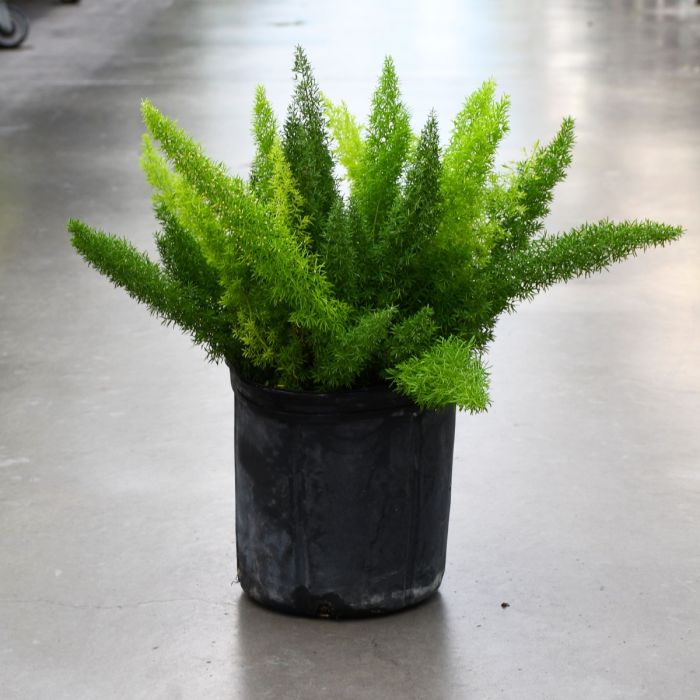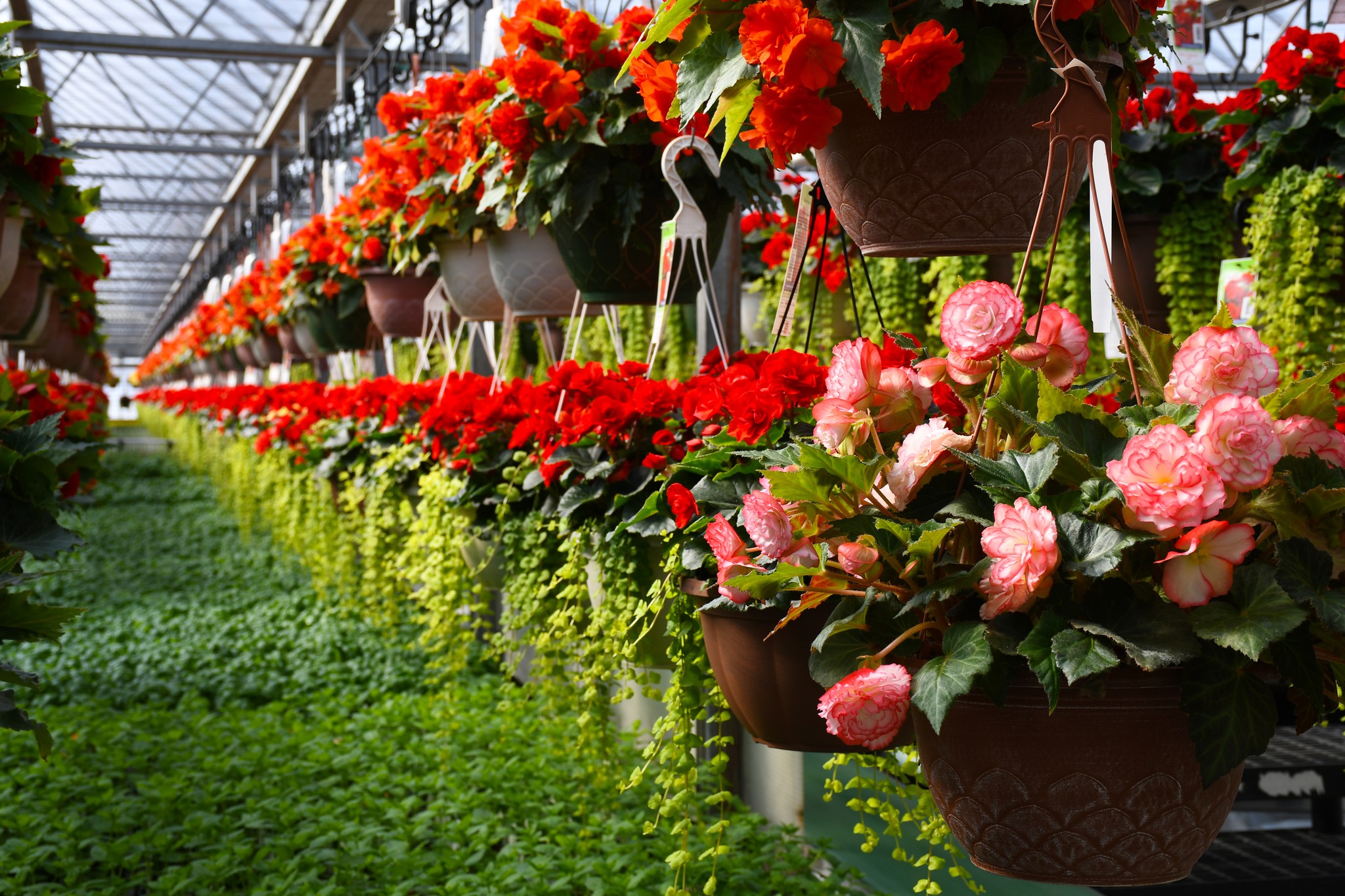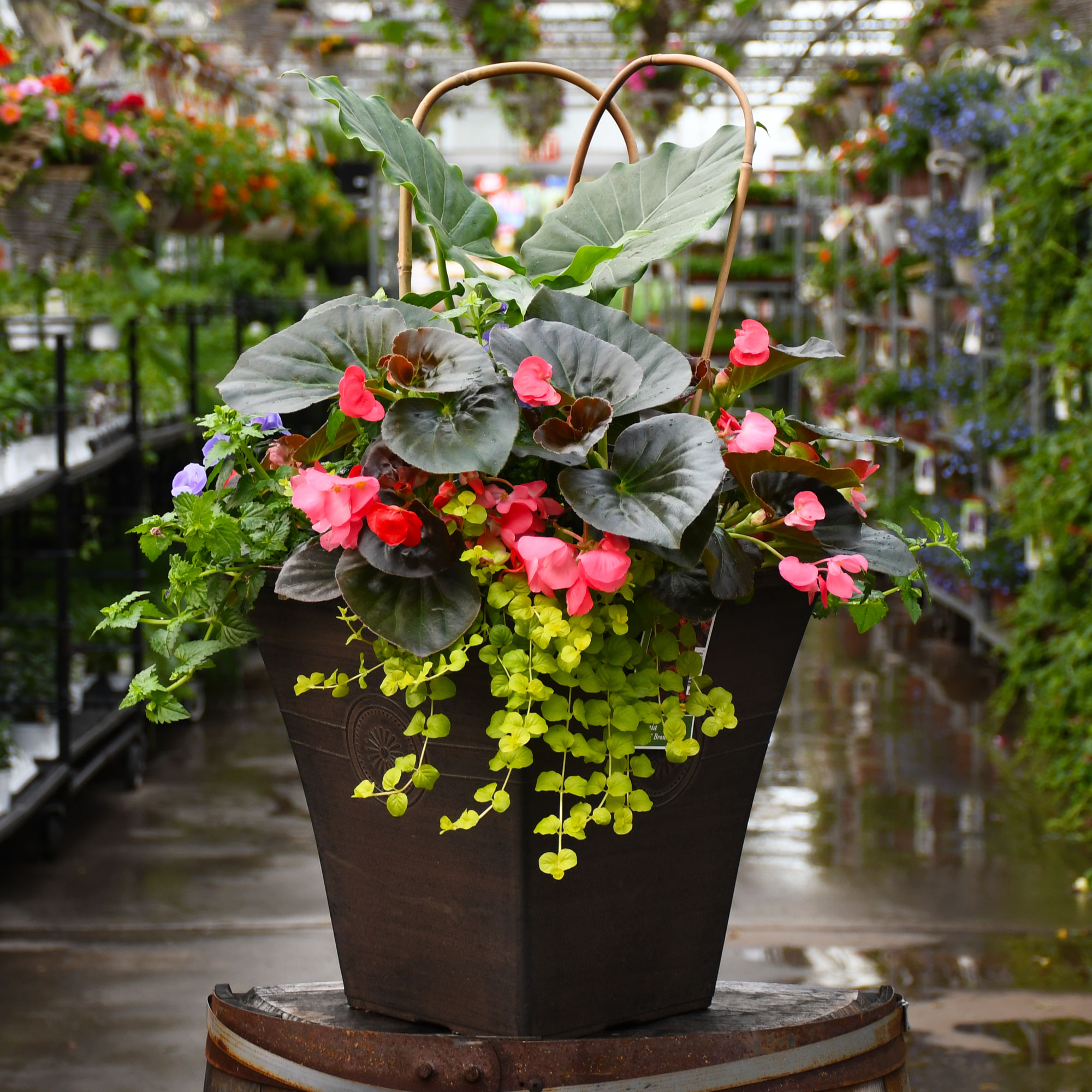Asparagus Aethiopicus 'Foxtail Fern'


Out of stock
Temporarily Out of StockDescription
Feathery and soft, this variety of asparagus native to South Africa creates great visual interest when massed; flowers are short lived and are hidden behind foliage therefore not very noticeable; this variety is a robust grower great for containers
Direct from the Grower
When you see the Gerten Grown logo on our annuals, you know you're getting a fresh plant directly from our greenhouse. We've been perfecting our growing process for over four generations and pride ourselves on providing local quality and freshness to our customers. Better pricing on better quality plant material, that's Gerten Grown.
Details
Height: 24 inches
Spread: 24 inches
Sunlight: ![]()
![]()
Hardiness Zone: 8b
Other Names: Myers Foxtail Fern; Cat's Tail
Description:
Feathery and soft, this variety of asparagus native to South Africa creates great visual interest when massed; flowers are short lived and are hidden behind foliage therefore not very noticeable; this variety is a robust grower great for containers
Features & Attributes
Foxtail Fern's attractive tiny needle-like leaves remain light green in color throughout the year. The flowers are not ornamentally significant.
This is a dense herbaceous houseplant with an upright spreading habit of growth. Its extremely fine and delicate texture is quite ornamental and should be used to full effect. This plant may benefit from an occasional pruning to look its best.
Planting & Growing
When grown indoors, Foxtail Fern can be expected to grow to be about 24 inches tall at maturity, with a spread of 24 inches. It grows at a medium rate, and under ideal conditions can be expected to live for approximately 15 years. This houseplant will do well in a location that gets either direct or indirect sunlight, although it will usually require a more brightly-lit environment than what artificial indoor lighting alone can provide. It does best in average to evenly moist soil, but will not tolerate standing water. The surface of the soil shouldn't be allowed to dry out completely, and so you should expect to water this plant once and possibly even twice each week. Be aware that your particular watering schedule may vary depending on its location in the room, the pot size, plant size and other conditions; if in doubt, ask one of our experts in the store for advice. It is not particular as to soil pH, but grows best in rich soil. Contact the store for specific recommendations on pre-mixed potting soil for this plant.
There are many factors that will affect the ultimate height, spread and overall performance of a plant when grown indoors; among them, the size of the pot it's growing in, the amount of light it receives, watering frequency, the pruning regimen and repotting schedule. Use the information described here as a guideline only; individual performance can and will vary. Please contact the store to speak with one of our experts if you are interested in further details concerning recommendations on pot size, watering, pruning, repotting, etc.
-- THIS IS A HOUSEPLANT AND IS NOT MEANT TO SURVIVE THE WINTER OUTDOORS IN OUR CLIMATE --
More Information
| Common Family Name | Fern |
|---|---|
| Plant Life Cycle | Annual |


